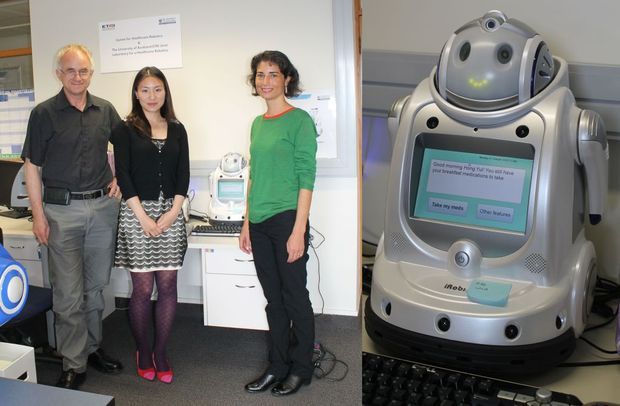
Bruce MacDonald, Healthbots project leader Jiao Xie and Elizabeth Broadbent, with iRobi, a robot especially designed for medical assistance in rest homes, private homes and health centres (images: Lisa Thompson).
A recent University of Auckland study has revealed a preference for humanlike features on a robot’s display screen. The study was a collaboration between researchers in health, psychology and robotics from The University of Auckland, and aimed to understand the impact of robots with screens.
Study leader Elizabeth Broadbent, says the study tested how appearance affected people’s perceptions of the robot’s personality and mind. The majority of participants (60 per cent) preferred the robot displaying the most humanlike skin-coloured 3D virtual face over a robot with no face display (30 per cent) and a robot with silver-coloured simplified human features (10 per cent).
Study participants interacted with each of the three types of robots in a random order while it helped them use a blood-pressure cuff and measured their blood pressure. Participants then rated the robots’ mind, personality and cheeriness each time. The robot with the most humanlike on-screen face display was most preferred and rated as having the most mind, being most humanlike, alive, sociable and amiable. The one with the silver face display was rated by participants as the most eerie, moderate in mind, human-likeness and amiability.
Study collaborator Bruce MacDonald says the research will help guide future development of ‘socially assistive’ robots that are being designed for healthcare. The research was published in the online scientific journal Plos One

